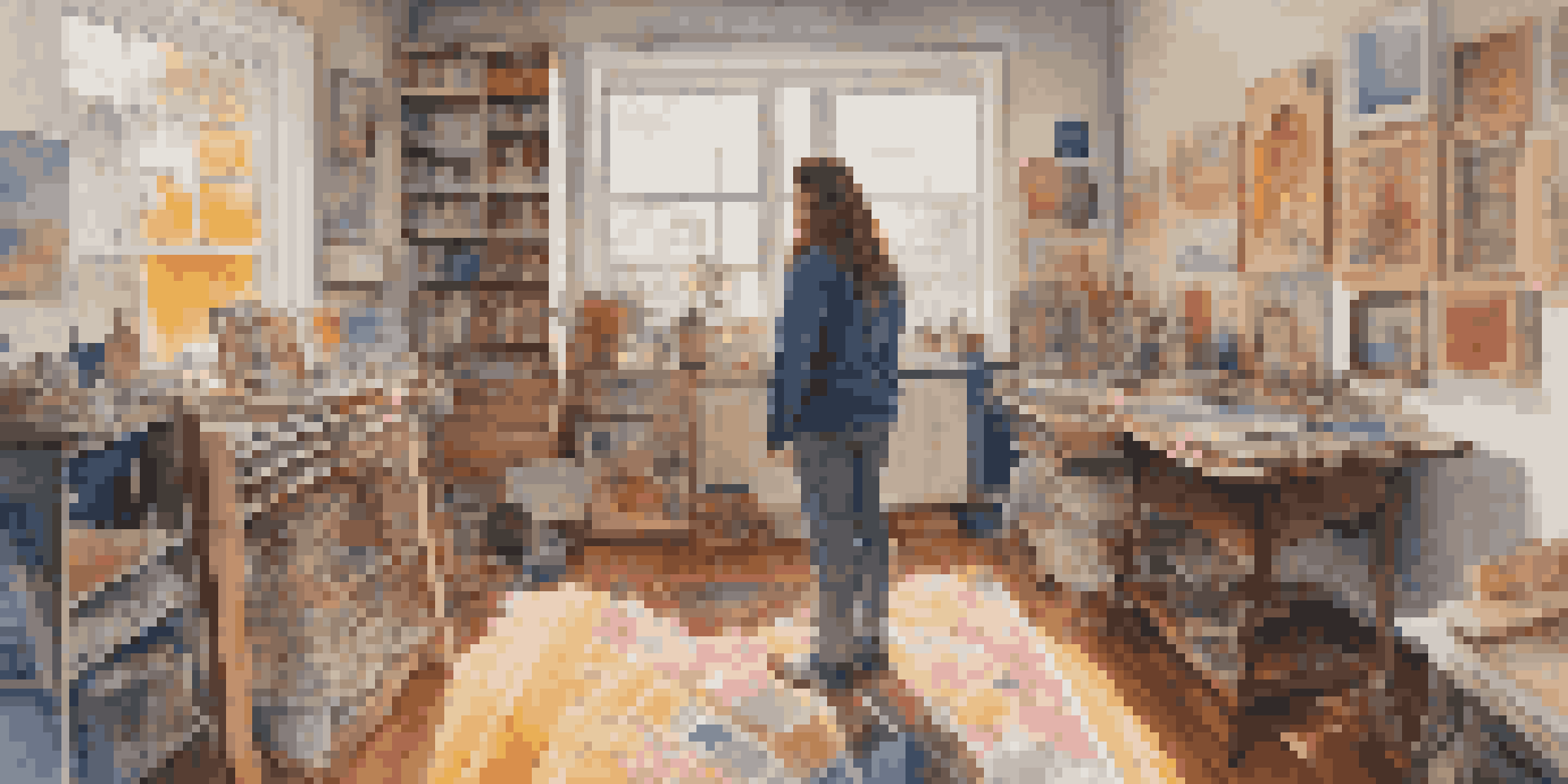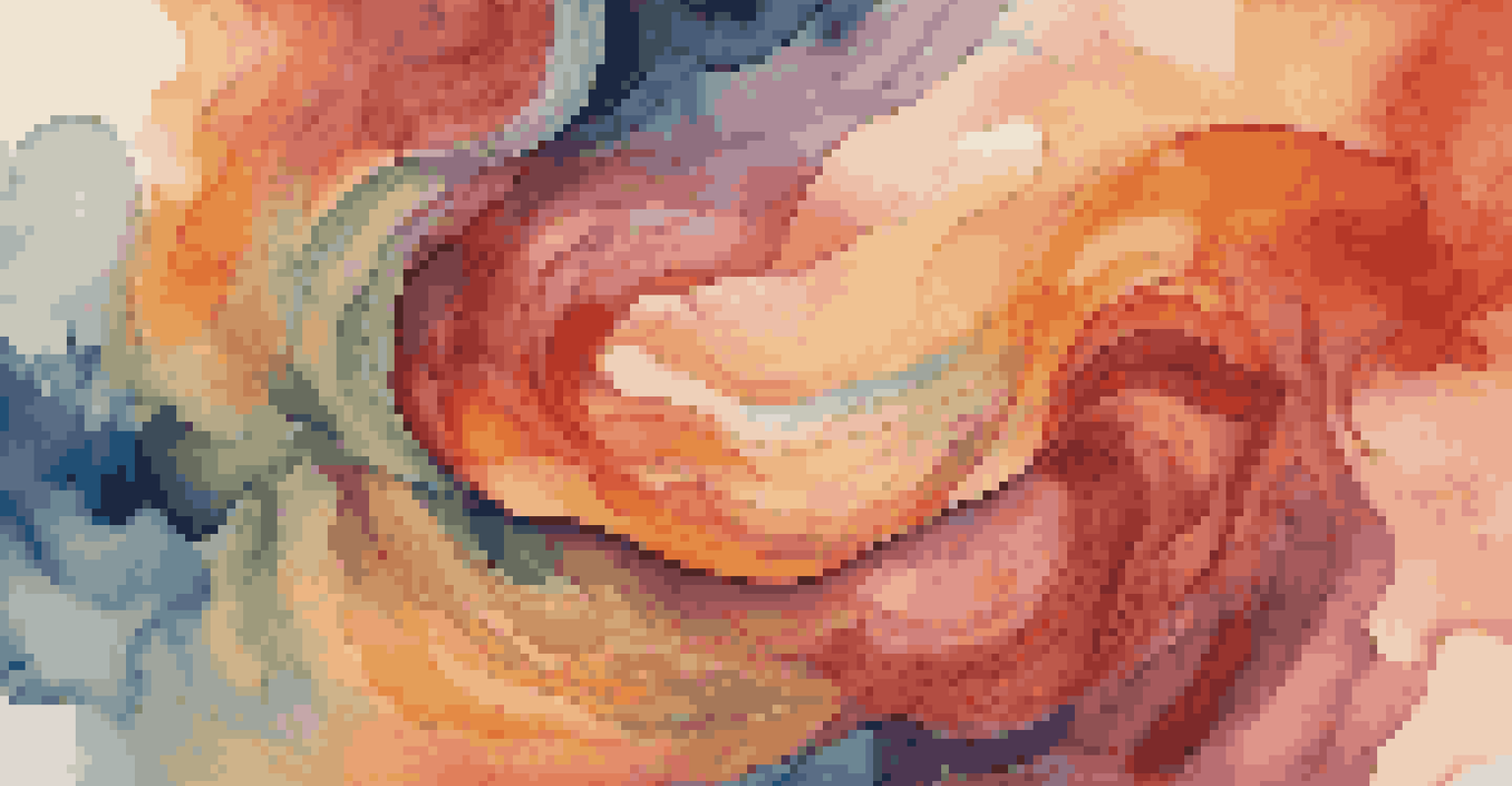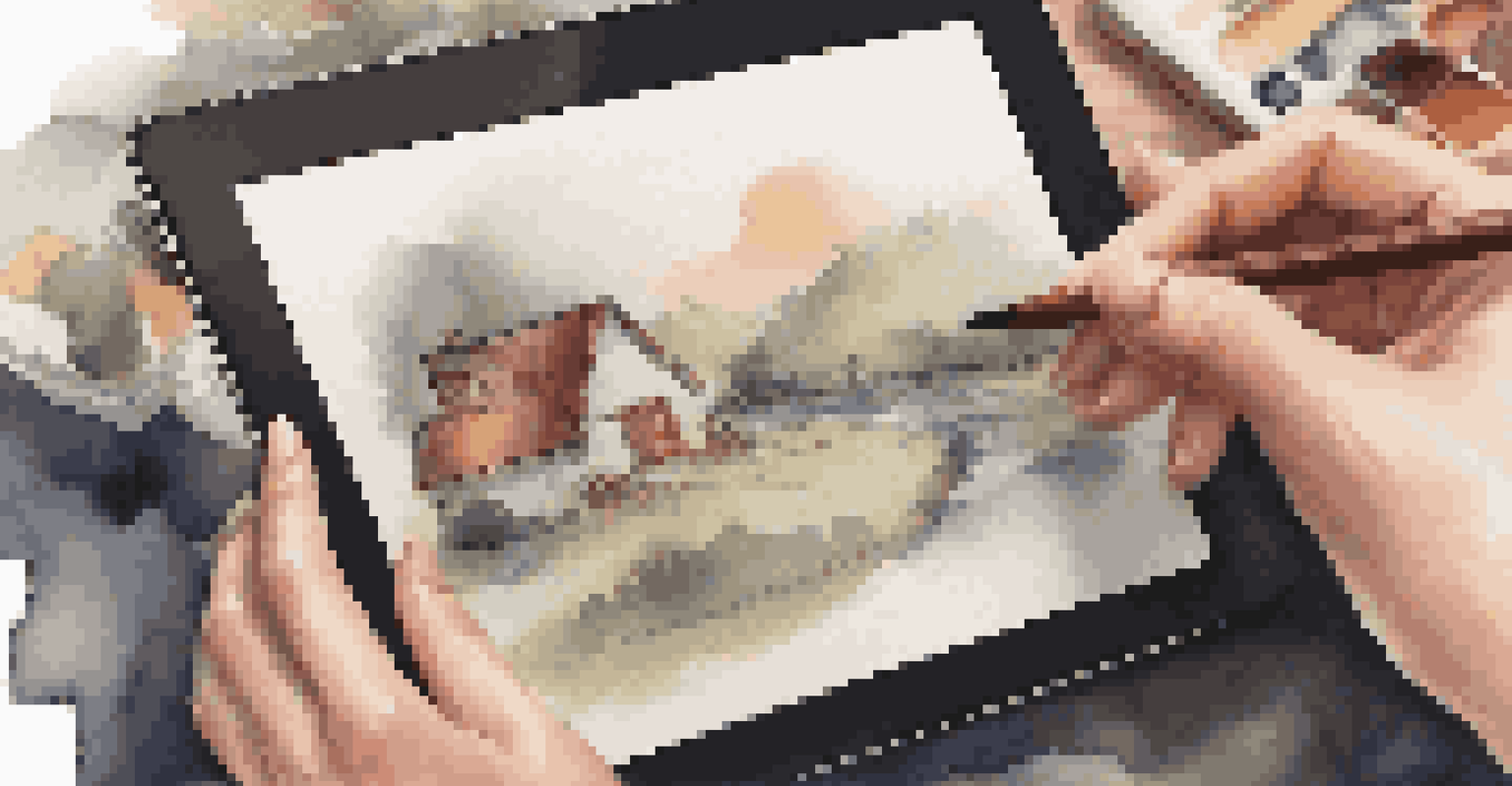Exploring the Aesthetics of Identity in Contemporary Art

Defining Identity in the Context of Art
Identity is a multifaceted concept that encompasses how individuals perceive themselves and how they are perceived by others. In contemporary art, this idea is often explored through various mediums and styles, offering insights into personal narratives. Artists use their work to express cultural backgrounds, gender, race, and other aspects that contribute to their identity. This exploration helps viewers connect with the art on a more personal level.
Art is a reflection of the times, and identity is at the heart of that reflection.
For instance, an artist might use self-portraiture to delve into their own experiences, showcasing layers of their identity through visual representation. By doing so, they invite audiences to reflect on their own identities and the factors that shape them. The dialogue between the artist and the viewer fosters a deeper understanding of the complexities involved in defining oneself.
In essence, the aesthetics of identity in contemporary art serve as a mirror, reflecting not just the artist's perspective, but also that of the society in which they operate. This relationship invites ongoing conversations about identity, pushing the boundaries of how we perceive ourselves and others.
Cultural Influences on Artistic Expression
Cultural background plays a significant role in shaping an artist's identity and, consequently, their work. Artists often draw from their heritage, traditions, and societal norms, integrating these elements into their artistic expressions. This process not only communicates their personal stories but also highlights the diversity of experiences within the broader spectrum of human identity.

For example, many artists from marginalized communities use symbolism and visual language that reflect their cultural histories. This artistic choice serves to educate audiences and bring awareness to issues that may be overlooked in mainstream narratives. As viewers engage with these works, they are invited to consider the richness of different cultural perspectives.
Identity Shapes Artistic Expression
Artists explore their identities through various mediums, enabling personal narratives that resonate with viewers.
Ultimately, the interplay between culture and identity in contemporary art enriches the overall dialogue within the artistic community. It encourages a more inclusive understanding of identity that embraces variations and complexities, helping to bridge gaps between different experiences.
Gender Identity and Artistic Representation
The exploration of gender identity in contemporary art has gained significant traction over recent years. Artists are increasingly using their work to challenge traditional gender norms and express their personal experiences regarding gender. This movement has led to a more nuanced understanding of gender as a spectrum rather than a binary classification.
The role of the artist is to ask questions, not to answer them.
For instance, many contemporary artists create pieces that explore themes of masculinity and femininity, often blurring the lines between the two. This approach not only reflects their own journeys but also resonates with audiences who may find themselves questioning societal expectations related to gender. By doing so, these artists contribute to a broader conversation about identity and self-acceptance.
As viewers engage with such works, they are prompted to rethink their own perspectives on gender, leading to a more profound understanding of its complexities. The representation of gender identity in contemporary art continues to evolve, encouraging open dialogues that challenge preconceived notions.
Race and Identity in Visual Arts
Race is another critical aspect of identity that contemporary artists frequently explore. Through their work, artists can examine societal structures, stereotypes, and the lived experiences of racialized individuals. This exploration can be both personal and collective, allowing for a richer narrative that encapsulates broader social issues.
Artists often use their platforms to challenge racism and advocate for social justice, tackling themes such as privilege, discrimination, and resilience. For example, artwork that highlights the struggles and triumphs of a particular racial group can spark conversations about representation and equity in society. This engagement encourages viewers to reflect on their own biases and experiences.
Culture Influences Art Narratives
Cultural backgrounds significantly shape artists' identities and their work, highlighting diverse human experiences.
The aesthetics of race in contemporary art not only deepen our understanding of identity but also emphasize the importance of inclusivity in artistic narratives. By showcasing diverse perspectives, artists contribute to a more comprehensive portrayal of the human experience.
Intersectionality in Artistic Narratives
Intersectionality is a critical concept in understanding identity, as it recognizes that individuals possess multiple identities that can impact their experiences simultaneously. Contemporary artists often embrace this complexity, weaving together various aspects of identity such as race, gender, sexuality, and class in their work. This multifaceted approach allows for a richer exploration of the human experience.
For instance, an artist may create a piece that addresses the unique struggles faced by Black women, combining elements of race and gender in their narrative. This intersectional lens enhances the depth of the artwork, inviting viewers to consider the interconnectedness of different identities. As a result, the dialogue surrounding identity becomes more inclusive and representative of diverse experiences.
By highlighting intersectionality, contemporary art encourages audiences to engage with a broader range of perspectives. This fosters empathy and understanding, ultimately contributing to a more nuanced appreciation of identity.
Digital Art and Identity Expression
The rise of digital art has transformed the way artists express their identities, providing new tools and platforms for creative exploration. Artists can now blend traditional techniques with digital technology, allowing for innovative representations of their personal and collective narratives. This fusion of mediums opens up exciting possibilities for storytelling and self-expression.
For example, social media platforms have given artists the opportunity to share their work globally, reaching diverse audiences and fostering connections. This accessibility allows for a more democratized approach to art, where individuals can engage with and contribute to discussions about identity from various cultural backgrounds. Additionally, digital art can challenge conventional notions of identity by offering alternative representations and experiences.
Intersectionality Enriches Art
Contemporary art embraces intersectionality, weaving together multiple identities to foster a deeper understanding of the human experience.
The intersection of technology and identity in contemporary art not only reflects changing societal norms but also shapes them. As artists continue to push boundaries and explore new forms of expression, they invite audiences to engage in conversations about identity in the digital age.
The Future of Identity in Contemporary Art
As we look to the future, the exploration of identity in contemporary art is likely to evolve further, reflecting the ongoing changes in society. Artists will continue to innovate, using their work as a platform to address emerging issues related to identity, such as globalization, technology, and social movements. This dynamic environment offers endless possibilities for creative expression.
Moreover, the increasing awareness of intersectionality and diversity will shape the narratives that artists choose to explore. We can expect to see more inclusive representation across various identities, pushing the boundaries of how we understand ourselves and others. This evolution will not only enrich the art world but also contribute to broader societal conversations.

Ultimately, the aesthetics of identity in contemporary art will remain a vital force for change, encouraging dialogue, understanding, and empathy among diverse audiences. As artists continue to challenge norms and share their unique perspectives, they will play an essential role in shaping the future of identity.